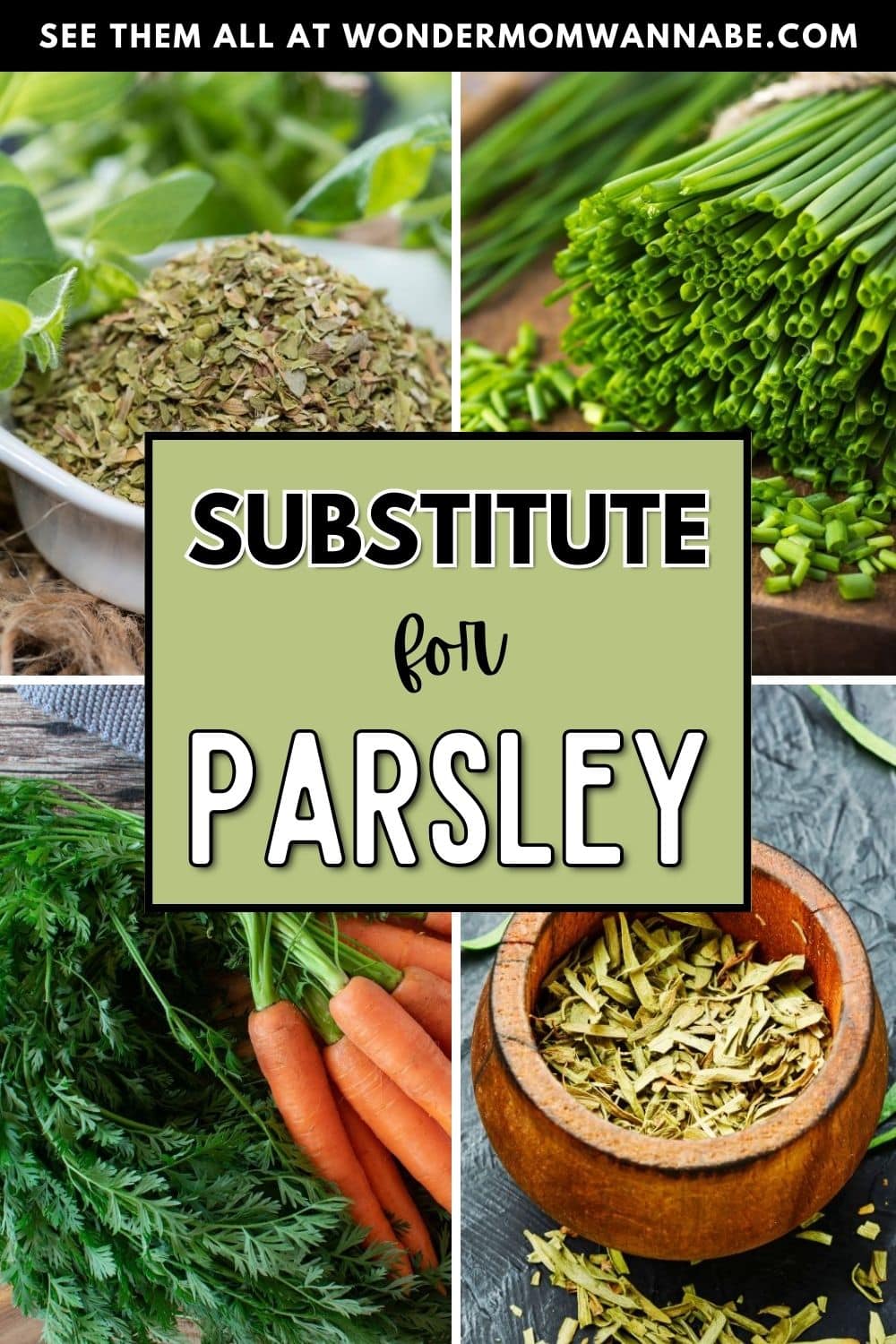With parsley being a very common ingredient in many dishes, it’s certainly helpful to know the best parsley alternative that will work for your recipe.
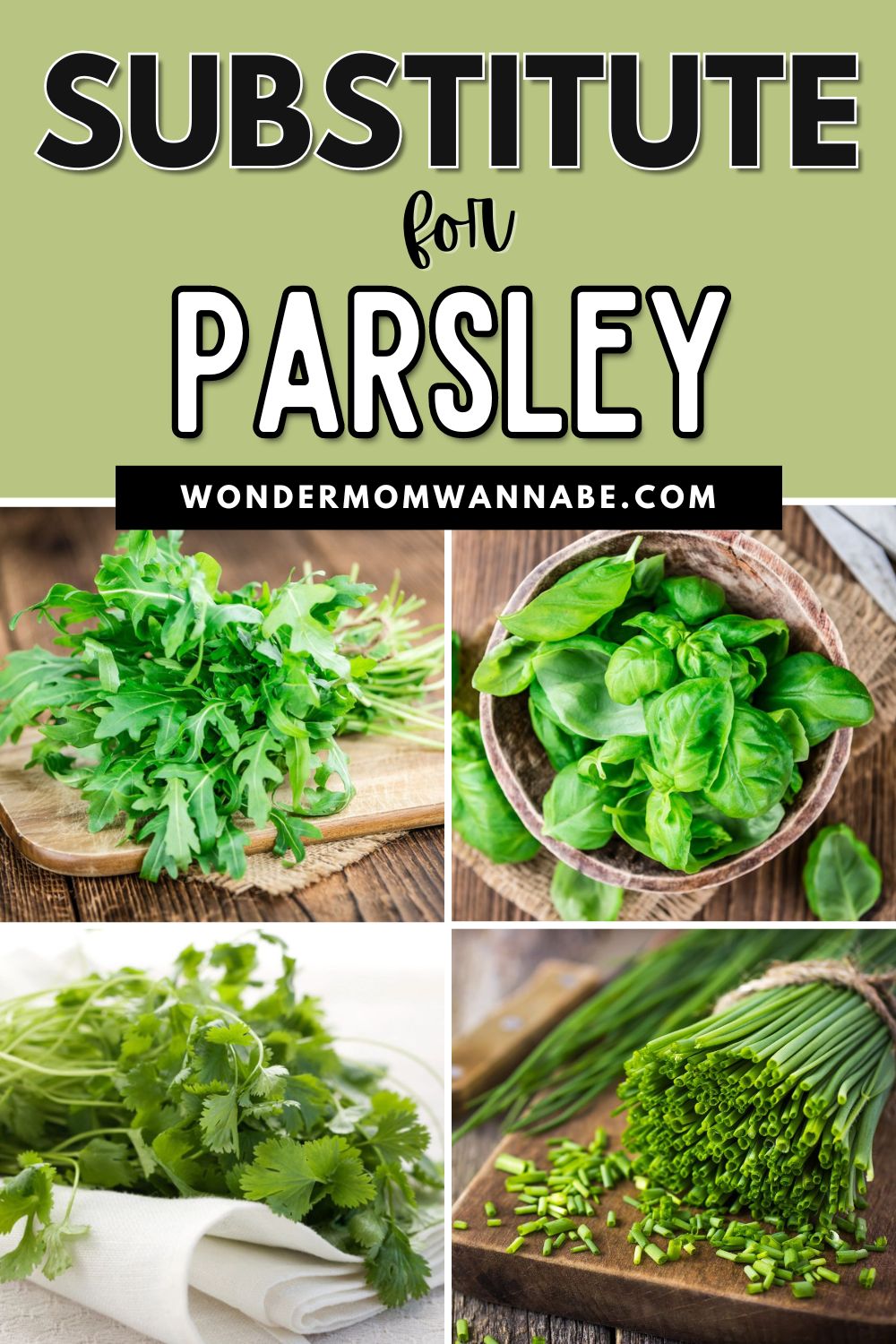
You’ll never know when a pantry emergency might occur and you suddenly realize you’ve run out of a common ingredient used in many recipes. Maybe you want to explore new flavors by using a different herb in your favorite dish.
Whatever the reason, expanding your culinary knowledge is always a good idea. So keep reading to know the best fresh or dried herbs you can use as a replacement for parsley.
Jump to:
Different Types of Parsley: Flat-Leaf Parsley vs. Curly-Leaf Parsley
You’ll find many recipes that simply list “parsley” in the ingredients, although the herbaceous plant has several types. When it comes to cooking, the two most common types used are flat-leaf and curly-leaf parsley.
Parsley is generally used in recipes for its noticeable peppery taste with hints of earthy and slightly bitter notes. This might not sound as appetizing, but this flavor profile is what makes parsley a perfect herb to balance the taste of other ingredients in various types of recipes.
While flat-leaf and curly-leaf parsley can be used interchangeably, using the best type of herb for certain recipes can make a huge difference. Here are some of their essential characteristics:
Flat Leaf Parsley:
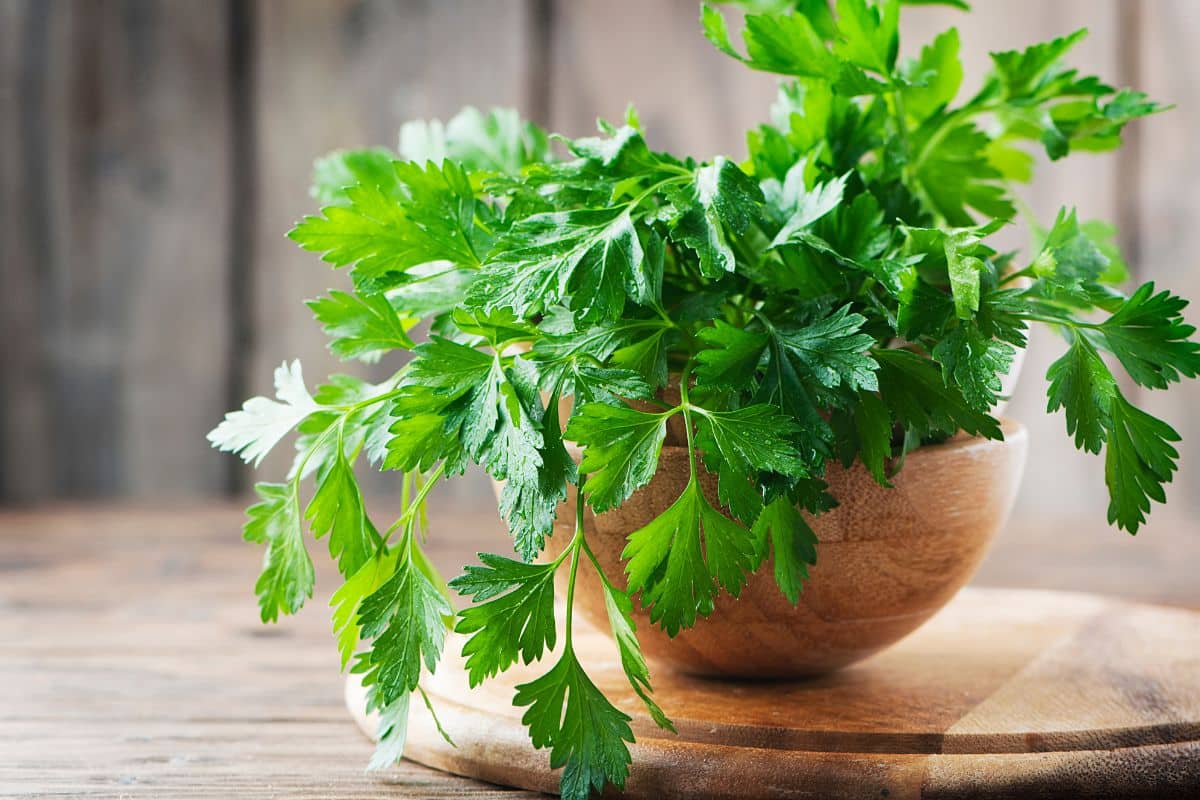
- Features flat, broad, serrated leaves with dark green hues
- Bolder flavor and more robust peppery notes with a slight earthy taste
- Best used in recipes for hot dishes like soups, stews, and sauces
Curly Leaf Parsley:
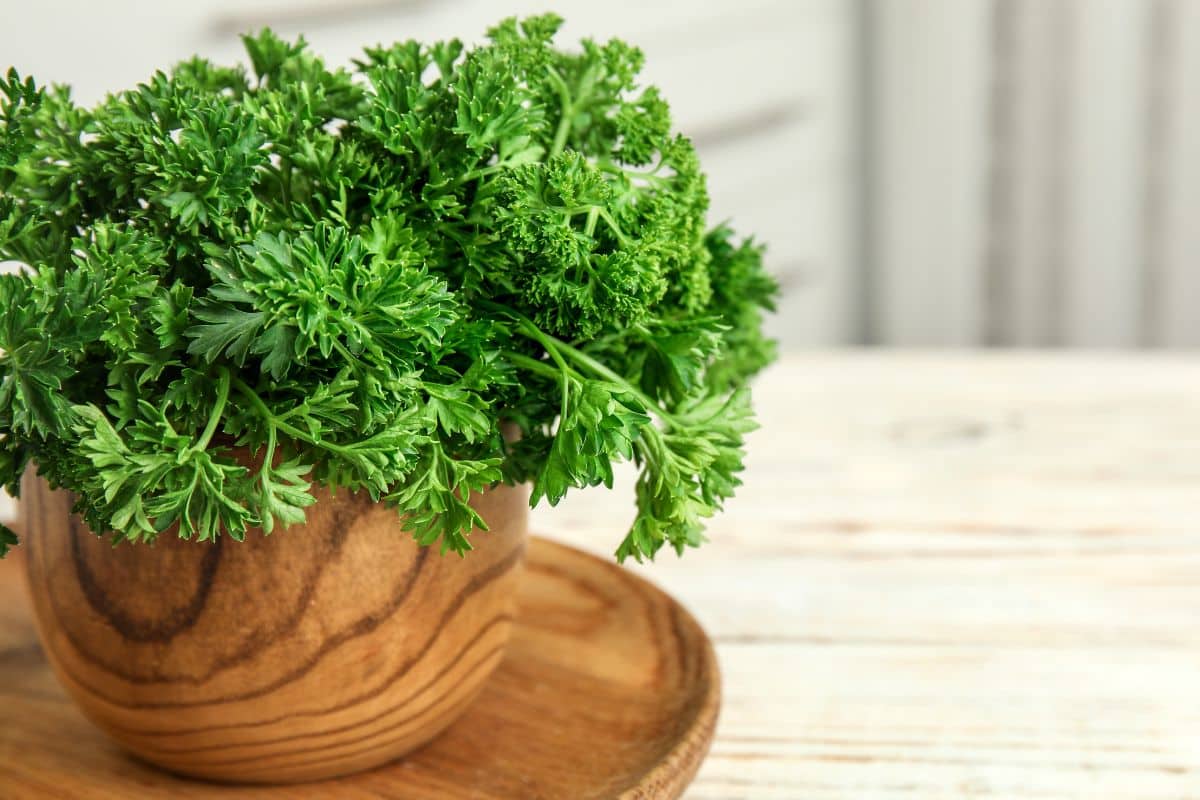
- Has brighter-colored, curly leaves
- More delicate flavor with a milder peppery taste
- Can be added in hot dishes, but it’s best utilized as a garnish and in cold dishes like salads
When to Use Fresh Parsley or Dried Parsley
Like other staple herbs in cooking, parsley is also available fresh and dried. The flavor profile remains the same. However, the concentration of the taste tends to be different.
You may have heard that dried herbs have a stronger flavor than their fresh counterparts. While that’s true for some herbs, it’s not the case for parsley. Its peppery and earthy flavors are more pronounced in fresh parsley, so it’s best used in recipes with shorter cooking times.
When using parsley as a garnish for salads and other cold dishes, or as a finishing touch for soups and stews, the vibrant color of fresh parsley is much better than dried parsley.
So when can you use dried parsley? The herb’s dried version is still a great addition to soups, stews, and sauces with longer cooking times. It can also impart flavor when making your herb and seasoning blend for dry rubs.
Great Substitutes for Fresh Parsley
Check out the best substitute for parsley you can use here:
Arugula
You’ll be surprised, but the parsley alternative with the most similar taste to the real thing is a leafy vegetable.
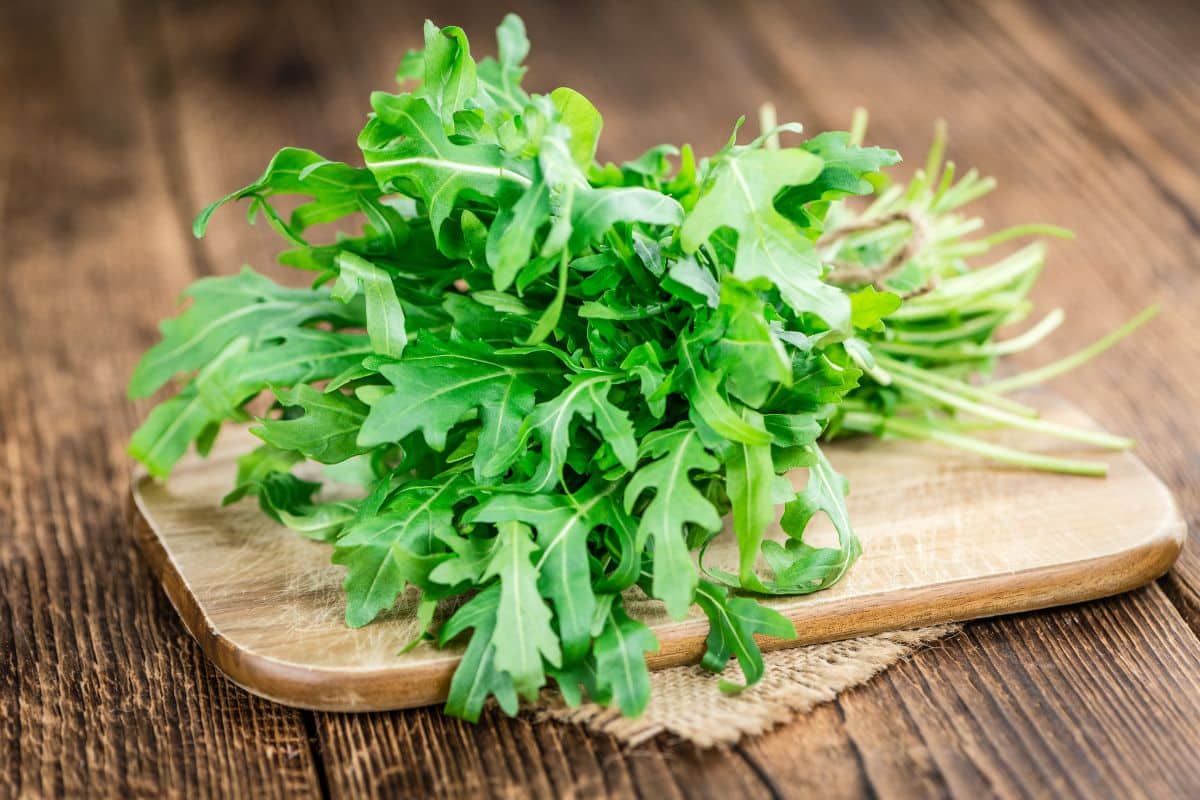
Arugula is often used as the main ingredient in some salads, but its flavor profile is comparable to parsley. It has the same peppery kick with a bit of bitterness and slight pungent notes.
It works great as a parsley alternative for cooking and in cold dishes. If the recipe calls for parsley mainly for its flavor, like in stews, meat sauces, and soups, then you can rely on arugula.
When using this as a garnish substitute, make sure to finely chop the arugula so it looks more like parsley.
You can use a 1:1 ratio when using arugula as a parsley alternative. Note, though, that arugula’s flavor is generally more robust than parsley.
Fresh Cilantro
Cilantro’s flavor profile includes hints of peppery and pungent notes similar to parsley with a distinct citrus taste. But, overall, cilantro is a great alternative to parsley, especially in Mexican and Mediterranean dishes.
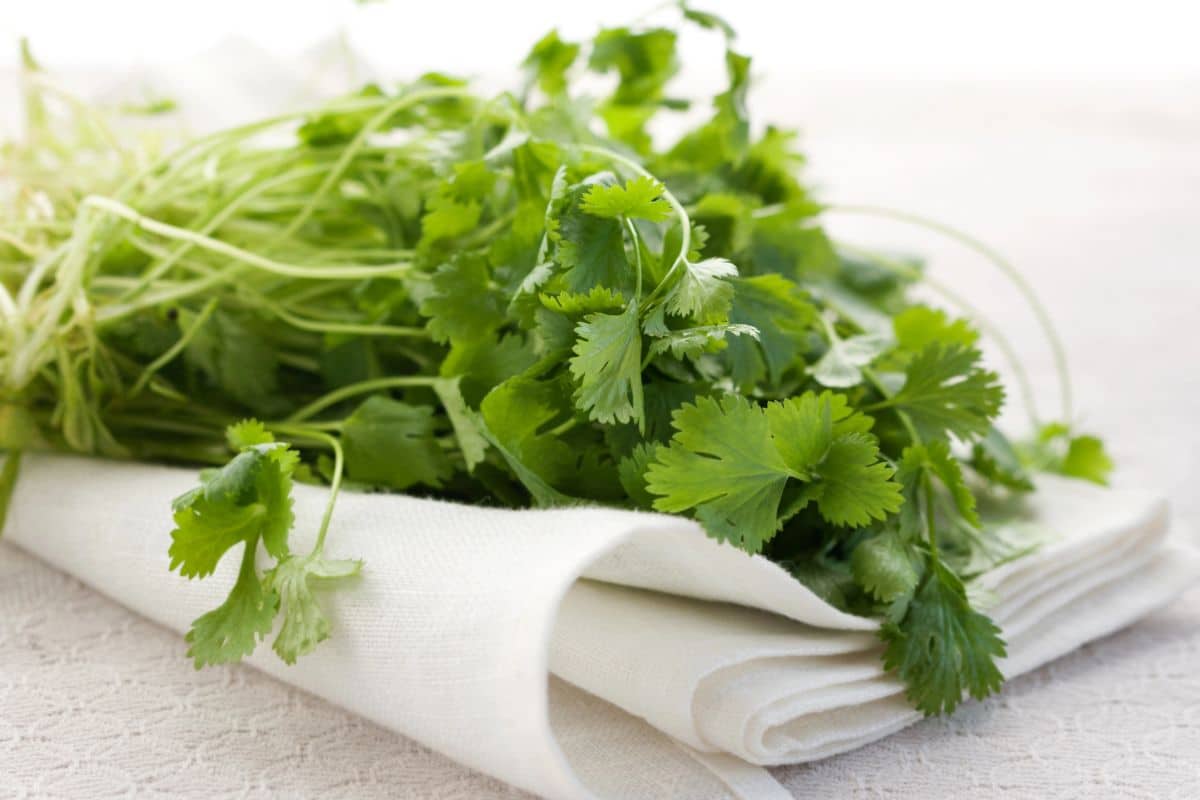
It also goes well as a garnish and as an ingredient in cold dishes. However, cilantro’s pungent and citrus flavors can change the outcome of a recipe that calls for parsley. So if the recipe needs 1 tablespoon of parsley, you should start by adding just ½ tablespoon of cilantro.
One thing to consider before using this herb is some people find that cilantro tastes like soap. There’s some scientific evidence that it could be because they’re genetically predisposed to strongly sense the aldehydes in cilantro.
If someone in your family has complained about the soapy taste of cilantro, you may have to choose a different parsley alternative.
Fresh Chives
Do you need a substitute for parsley to use as a vibrant garnish? Chopped fresh chives are a great option.
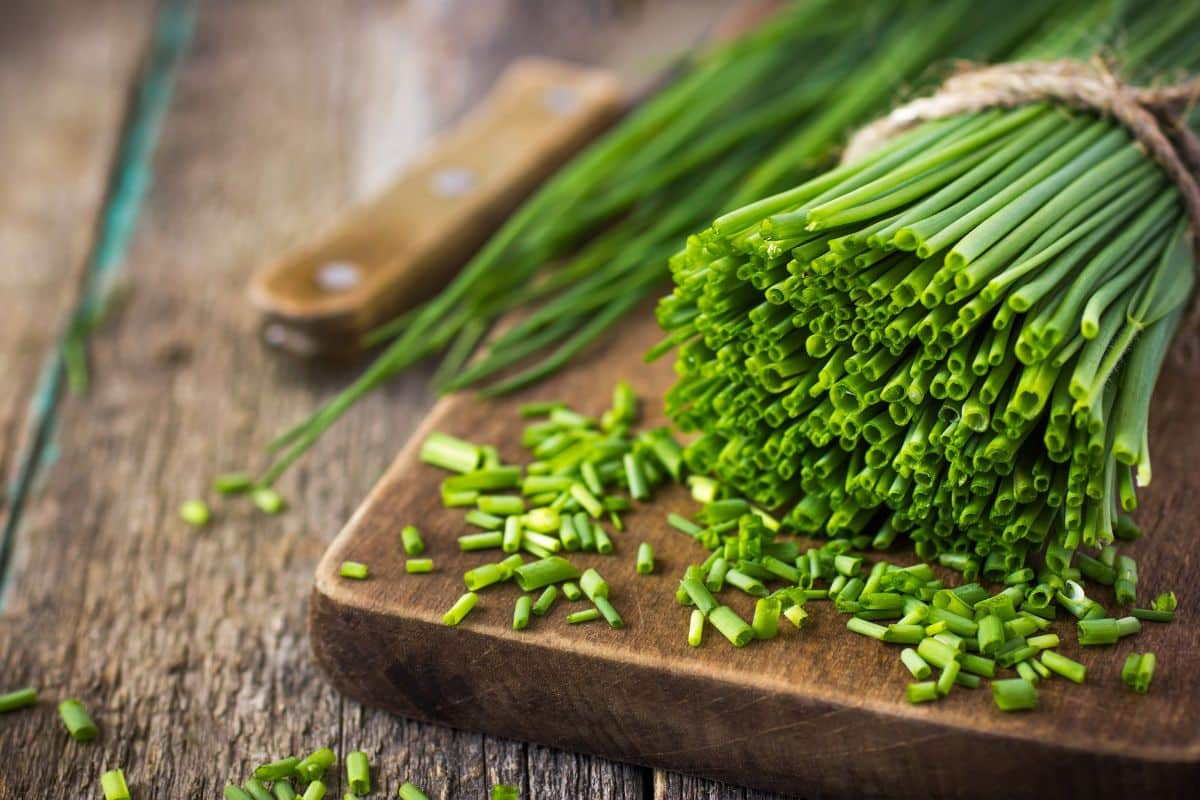
The flavor of chives is very similar to onion, with a slight resemblance to garlic. While it lacks the distinct peppery taste you get from parsley, it can still act as a flavor enhancer when used in soups and stews.
Overall, fresh chives have a delicate and mild taste, so it shouldn’t greatly affect the taste of a recipe that initially needs parsley. You can add the same amount as you would with parsley.
Chives also have a deep green color, making it a fantastic garnish when you’re out of fresh parsley.
Carrot Greens
Gone are the days when carrot greens were thought to be inedible, which is great. This leafy green vegetable tastes great and is a great ingredient in salads, soups, roasted dishes, and sauces.
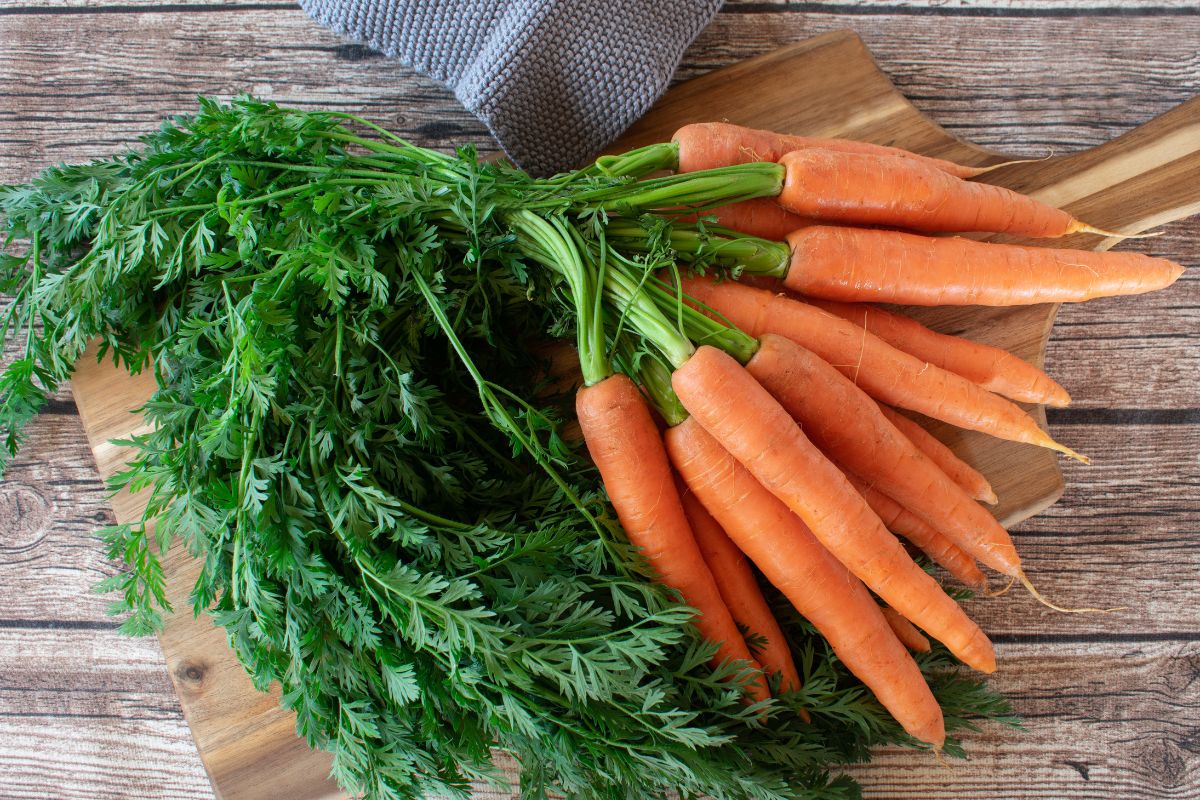
It’s also an amazing alternative for fresh parsley in many recipes because carrot greens have a similar earthy flavor to the popular herb.
Carrot greens are less peppery than parsley, but they tend to have a stronger bitter flavor. So you should use it sparingly, or start with ½ tablespoon if the recipe calls for 1 tablespoon of fresh parsley.
Fresh Basil
Parsley and basil have different flavor profiles, but they go so well in many Italian dishes and recipes for tomato-based sauces, stews, and soups. It makes sense that fresh basil can be a fitting substitute for parsley.
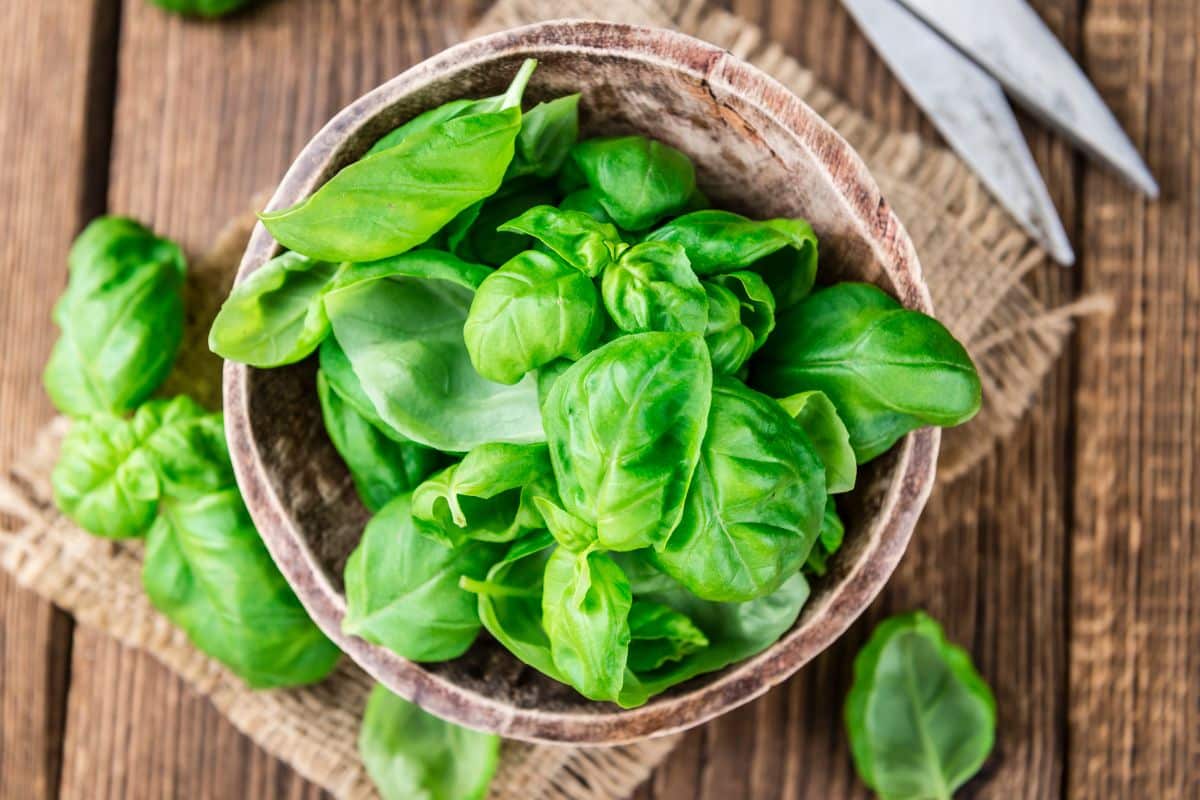
Fresh basil leaves impart a delicate, sweet, and slightly minty flavor, but it doesn’t have the same peppery taste you get from parsley.
The mild flavor of basil is less likely to overpower a dish, so you can follow a 1:1 ratio when using it as a parsley substitute.
You can also add chopped fresh basil in place of parsley to use as a garnish or as a salad addition.
Best Dried Parsley Alternatives
Dried Oregano
Oregano has a rich earthy flavor with mild hints of spiciness and bitterness. It’s also mildly sweet with a slightly astringent aftertaste.
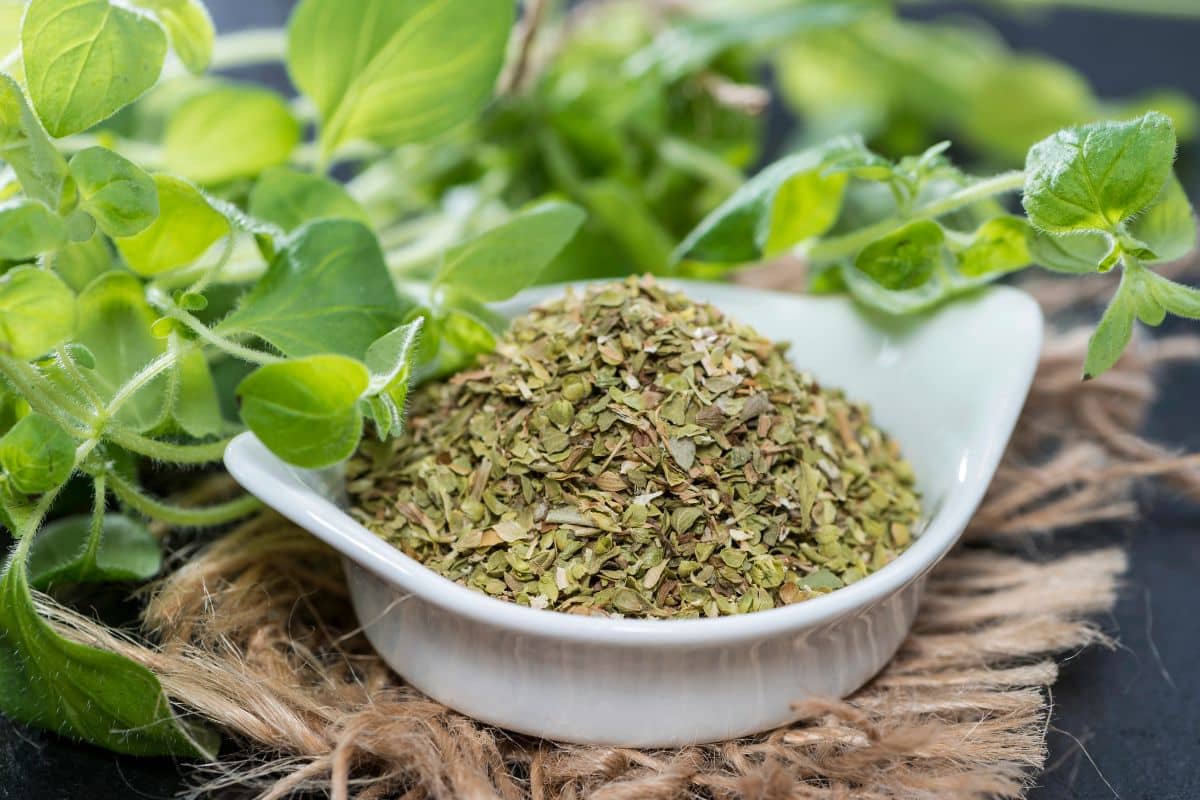
With all that combined, dried oregano can be a good alternative for dried parsley when making a stew, soup, or pasta with a tomato-based sauce.
However, dried oregano has a stronger flavor than parsley, which could easily overpower a dish. So if the recipe needs 1 teaspoon of dried parsley, you can initially add ½ teaspoon of dried oregano. Then taste as you go, and determine if you need to add more.
Dried Tarragon
Tarragon is known for its licorice-like taste with bittersweet and pungent flavor notes. While it doesn’t have the same flavor as parsley, these herbs go so well together. It is one of the best substitutes for dried parsley in Italian dishes.
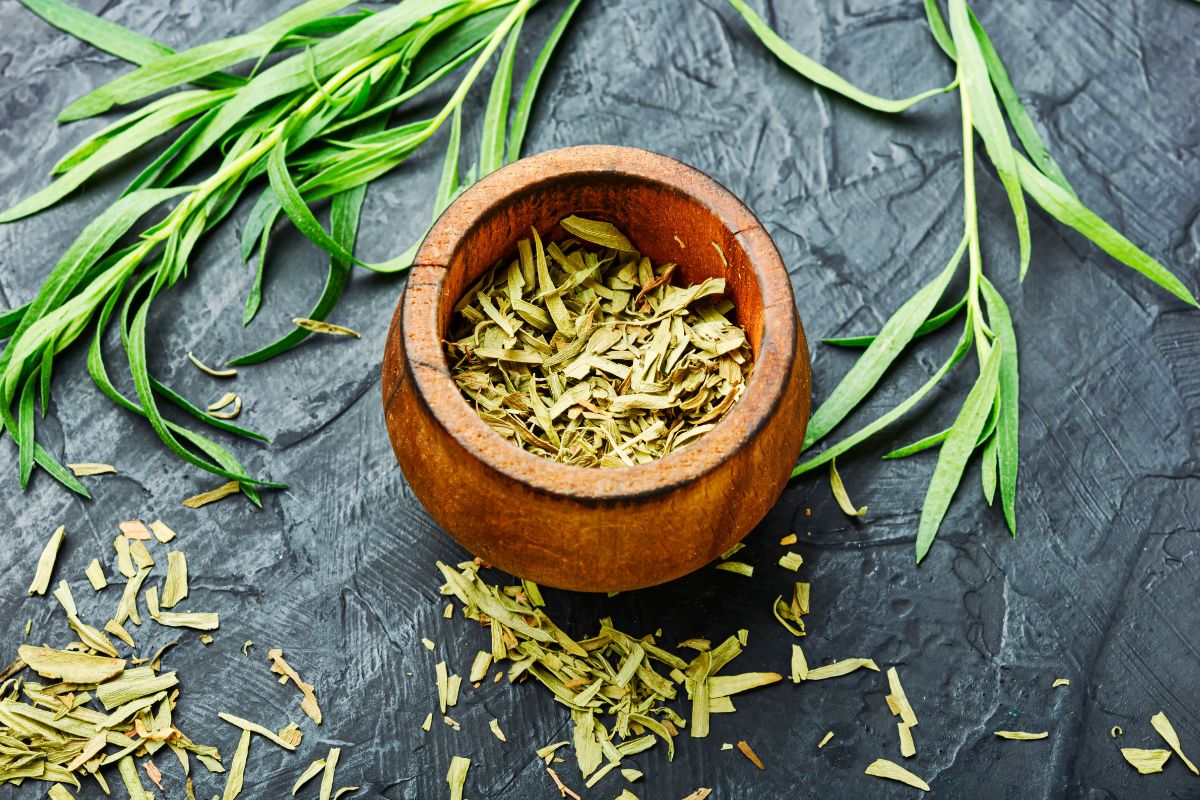
Recipes for salad dressings and sauces are some of the best ways to use dried tarragon to replace dried parsley.
Because of its anise-like flavor, it’s best to add a smaller amount of dried tarragon initially. If the recipe needs 1 tablespoon of dried parsley, you can start by adding ½ tablespoon of dried tarragon.
Dried Chervil
Chervil is an interesting herb, particularly because it tastes like a cross between parsley and tarragon. It provides an earthy, herbaceous flavor with a mild licorice taste.
So, unsurprisingly, it can be a reliable substitute for parsley in soups, sauces, and cold dishes like salads.
Chervil is a delicate herb, so feel free to add the same amount as needed for parsley.
FAQs
Absolutely! Parsley has peppery, slightly bitter, and pungent flavors that help balance and brighten the flavor of a dish. Instead of skipping parsley when it’s unavailable, look for the most fitting alternative herb.
Parsley stems are completely edible and can be used in recipes that need this herb. But remember that the stems can impart a stronger bitter flavor to your dish.
Italian seasoning is a blend of several herbs, including parsley. It can be used to replace parsley, especially to enhance the flavors of pasta recipes and Italian dishes.
Save Your Dinner Plans With the Best Parsley Substitute
Different types of parsley can impart slightly different tastes to a dish. The same can be said for fresh and dried parsley.
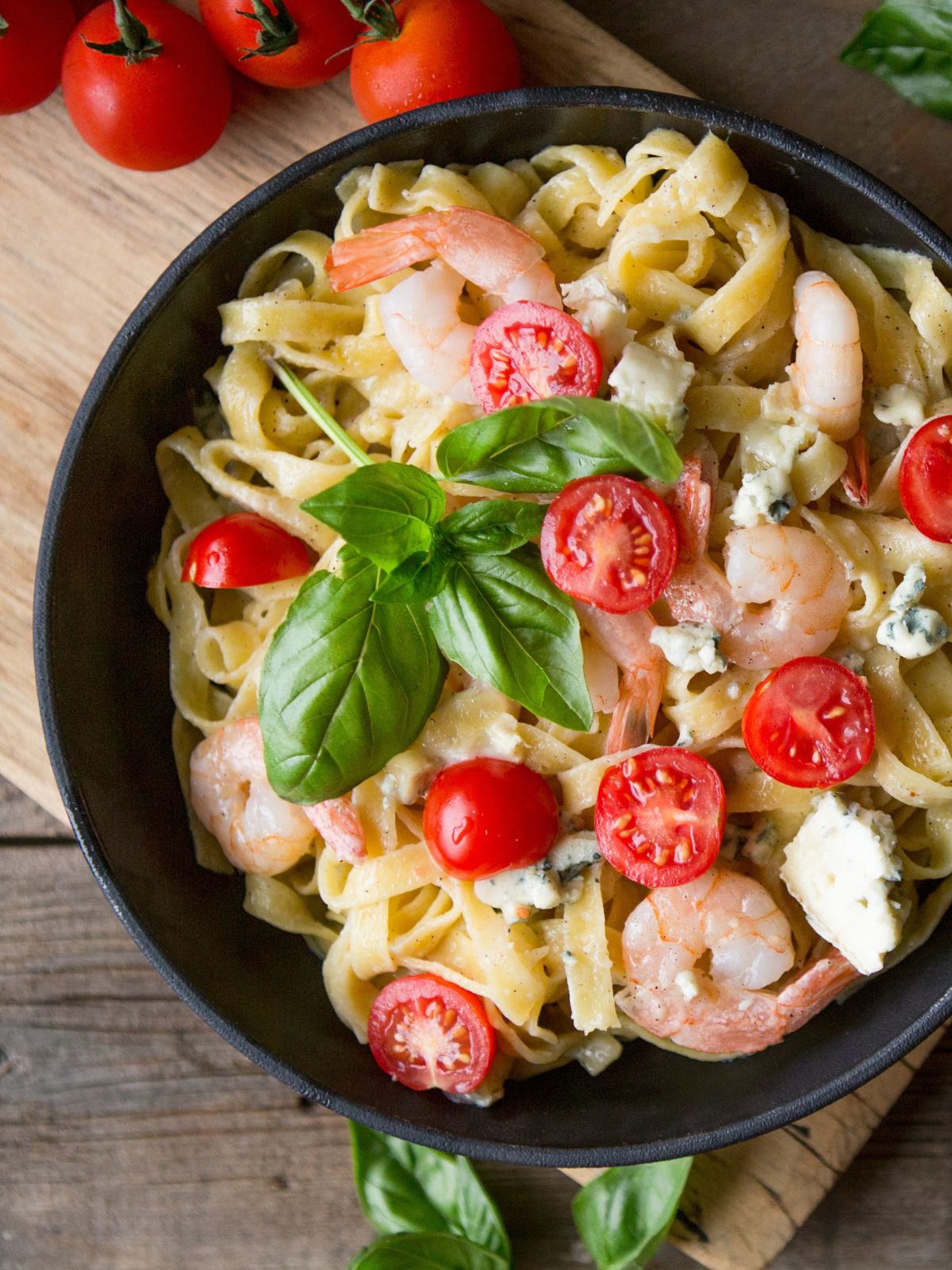
When choosing the best parsley alternative to use, make sure to consider how they affect the overall flavor of a dish. Choosing the most fitting substitute for parsley will certainly help you serve a delicious meal for the family.

